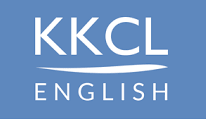Phrases for offering and ordering: How about … , Would you like to try…?, I´ll give (sth)… a try. Can I get you something to drink? I´ll get you … l´ll have…
Paula and Lorena, Spanish students, came to London for summer English course. It is their first morning with host family. They wake up hungry. The food in England is certainly different than in Spain. Will they enjoy their English breakfast?
Checking understanding of the video and practising vocabulary .
In this activity you will take part in a quiz! The quiz has 4 different topics and 4 different levels. Help your team win!
You will hear from your teacher:
After each question you can have a discussion and some follow-up questions with the class.
Example: After answering a True or False question, ask the students why it is true/false and what they remember about it from the video.
In the game, if you click on the three dots in the bottom right corner, you can set a time limit for answering the questions. To do that, follow these steps:
Answers provided (in the game).
To reinforce target structures and practice language functions (offering, refusing, and accepting food).
Online class:
You can share the link with the students and put them in separate “rooms”.
Face-to-Face class:
You can perform this as a whole class activity, especially if you don’t have many students in your class. Share the link on the interactive board and have students discuss the correct order with you, as you put the words/phrases in the correct boxes.
You can also put them into pairs or groups if they have their own tablets or computers available.
To make this activity more interactive and communicative:
When the task is finished, ask the students to discuss:
Developing pronunciation of key language focused on “I’d like”.
Optional memory game:
The video has a bonus activity on another topic, make sure you stop it before that (4:32)
If you decide to play the game, only have the students repeat a few sentences from the video and then go straight to the game.
Optional (memory game)
To make the activity more active, you can ask the students some follow up questions after each sentence. Example: “I’d like to lie down”; “How are you feeling?”
Ask the students who would say this sentence and in which situation; ask them, how the person is feeling – energetic or exhausted and sleepy?, etc.
“I’d like to see a doctor” – why would a person say that?
Explain to the students that “I’d” is a shortened version of “I would” and give examples using it in other persons. Explain, that we don’t use the shorter version when saying someone’s name.
Example: I would like/I’d like; she would like/she’d like; we would like/we’d like; Lucy would like/Lucy’d like
Not applicable.
Connecting topic to real life experience and revising the key phrases.
You can play the full video (without the gap sentences) before doing the activity, so that the students have an idea of what they have to pay attention to while doing the activity.
The full video: Activity 4_full video
If the students are struggling, you can click on the light bulb in the top left corner. A box called “help” will appear. The students will be able to see the full phrases used in the video and the missing words (food and drinks). Remember that sometimes in the video they have to fill just parts of the full phrases in the gaps.
The phrases and words in the “help” box are NOT in order of the video.
Remind the students that “I will” can be shortened to “I’ll”, and “gonna” is a shortened and slang version of “going to”, as these phrases appear in the activity.
Engaging creatively with the language and revising vocabulary.
This task would be best done in a computer room, where students would have the access to the video and could replay it as many times as possible.
They might also need some devices that will allow them to record an audio (phones, tables, computers, headphones, etc.).
You can put the students in groups of 6, so that each student has a different character – there are 5 friends at the table and a waiter.
You can also put them in smaller groups or pairs. In this case, some students will have to read or record multiple characters.
Not applicable.




The BOOST Project (Building Open Online Series for Teaching) aims to improve the digital readiness of teachers of English as a foreign language to students aged 8 -14 by providing an open-access series of engaging native-speaker content videos linked with a Resource Pack of ready-made activities to stimulate production of the language in online learning.
